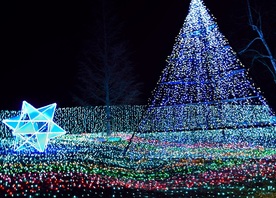The Futabanosato Walking Trail (二葉の里) is a 10km long hiking path following 16 different historical sites in Hiroshima.
Table of contents:
Visiting the Futabanosato Walking Trail
Hiroshima is often mentioned for the a-bomb during WWII that destroyed the city on a scale never seen before. A visit today to Hiroshima will likely include sightseeing at the A-Bomb dome, the peace memorial park plus museum and experiencing the miraculous recovery that the city went through. Yet there is much more to Hiroshima's history prior to WWII. The Futabanosato Walking Trail is exactly that, a walk through memory lane exploring what Hiroshima was in the past. 
The trail stops at a variety of sights, temples and shrines, each with their own story to tell, and will take the visitor on a route that shows the unexplored side of Hiroshima.Stops along the Futabanosato Walking Trail
As mentioned there are 16 normal stops along the way, some rather iconic that can be seen from the Sanyo Shinkansen upon arrival at Hiroshima station like the Mount Futaba Peace Pagoda. Here is a full list of all 16 stops:
- Fudo-in Temple, one of the more impressive temples in Hiroshima. The temple itself only suffered minor damage during WWII and most structures remain as build in the 17th century.
- Nittsuji, old temple with good views over the local river.
- Waterworks Museum, basically a pumping station built in 1898. Interesting to see how things were built over 100 years ago.
- Hikari Shrine, believed to be the oldest shrine in Hiroshima and built at a place where the local river forks, this shrine was used by fishermen and sailors to pray for a good journey.
- Yatsurugi Shrine, a wayside shrine, legend says 8 swords were buried here as appeasement to dangerous water spirits.
- Anrakuji Temple dating back to 1533, the ginkgo trees in front are over 350 years old and considered sacred.
- Nigitsu Shrine, a small shrine building originally built in 1835 and rebuilt in 1984. It was originally built as memorial hall for the memorial monolith commemorating the local daimyo ruler called Nagamasa.
- Myojoin Temple, the main feature of this temple is its impressive gates, where a large wooden guardian protects the temple against wrongdoing.
- Tsuruhane Shrine, dating back to 1350 the main feature of the Tsuruhane shrine is its impressive landscaping garden.
- Toshogu Shrine, similar to the main Toshogu Shrine in Nikko, this shrine is the most flamboyant shrine in Hiroshima and often visited by locals. Yet, less frequented by tourists.
- Kinko Inari Shrine build, to honour the deity of rice, people now come to pray here for success in business. There are quite a few vermillion torii, similar to Fushimi Inari in Kyoto.
- Mount Futaba Peace Pagoda, visible from almost anywhere in Hiroshima, this iconic peace pagoda overlooks the city and makes for a great photo opportunity. This pagoda is one of the first things you'll see when arriving by bullet train in Hiroshima.
- Onaga Tenmangu Shrine, dedicated to Tenjin, known as the deity of scholarship and calligraphy, students pray here for success in exams. Related to the main Tenmangu Shrine in Osaka.
- Kokuzen-ji, a family temple dedicated to the Asano clan, the old rulers of Hiroshima.
- Shoko-ji, boasting scenic views over the local mountain-scape, Shoko-ji shares its history with Sengaku-ji, the final resting place of the 47 Ronin.
- Saizo-ji, this temple is guarded by the statue of Samurai Saizo Kani, a famous samurai known for his skill with a spear. Learn about his life and story at the temple grounds. Saizo-ji is also the last stop of the Futabanosato trail.
Getting to the Futabanosato Walking Trail
Starting the Futabanosato trail is easy right from Hiroshima station. The local tourist information provides free walking maps with tons of useful information, so pick one up before you start. Then head to the north exit of Hiroshima station and proceed north for about 3 blocks to Hikarigaoka Yamane Park. There's a public washroom here and makes for a convenient unofficial start of the trail. From here the trail can be explored clockwise or counter- clockwise, we suggest the former as it gives the option to finish at JR Yaga station, this reduces the amount of walking.Tips for hiking the Futabanosato trail
- Reserve about half a day for the entire trail, this way you can take your time and enjoy the experience without having to hurry.
- The trail is close to Hiroshima Castle, which can be an easy add-on visit.
- Part of the trail can also be explored using the Hiroshima City bus, which is included for free with your JR Pass.

.png)


